Many countries honour the memory of their scientific personalities on postage stamps. There are many websites devoted to this; one of the most comprehensive, in the case of mathematics, is Images of Mathematicians on Postage Stamps by Jeff Miller, a high school teacher at Gulf High School in New Port Richey, Florida (USA).
Less common is the appearance of portraits of mathematicians on banknotes (Wikipedia has a page devoted to all sorts of people pictured on them) but, fortunately, there are banknotes that do show four of those who, in my opinion, are essential: Newton, Euler, Gauss and Abel. Here they go:
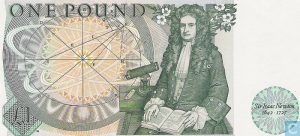
(Poor Newton; the Sun was placed at the centre of the ellipse, not at a focus).
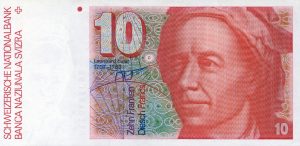 (Poor Euler; of all his contributions, they were to choose for background illustration what are known today as Venn diagrams).
(Poor Euler; of all his contributions, they were to choose for background illustration what are known today as Venn diagrams).
 (Poor Gauss; the picture is a mirror image of the original portrait by C. A. Jensen).
(Poor Gauss; the picture is a mirror image of the original portrait by C. A. Jensen).
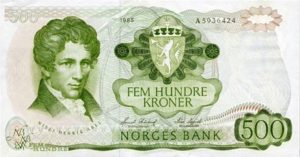
(Poor Abel; the portrait is also a mirror image of the original drawing by J. Gørbitz).
What about Spain?
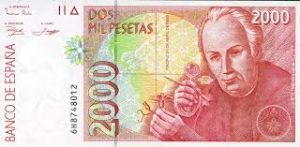 “Ma in Ispagna son già mille e e tre” sings Don Juan in Mozart’s opera enumerating his conquests. Not a thousand and three; only three, that I have found, are Spanish banknotes dedicated to scientists; significantly, all three are directly related to mathematics. Let us start with the 2000 peseta banknote dedicated to Celestino Mutis who, apart from his main activity as a botanist and naturalist, was the first Professor of Mathematics at the then Colegio Mayor and now University of Rosario (Argentina).
“Ma in Ispagna son già mille e e tre” sings Don Juan in Mozart’s opera enumerating his conquests. Not a thousand and three; only three, that I have found, are Spanish banknotes dedicated to scientists; significantly, all three are directly related to mathematics. Let us start with the 2000 peseta banknote dedicated to Celestino Mutis who, apart from his main activity as a botanist and naturalist, was the first Professor of Mathematics at the then Colegio Mayor and now University of Rosario (Argentina).
A 10,000 peseta banknote was dedicated to Jorge Juan, who, together with Antonio de Ulloa was one of the pioneers of infinitesimal calculus in Spain, and included one of the figures he used in his calculation of the meridian to demonstrate that the Earth is flattened at the poles.

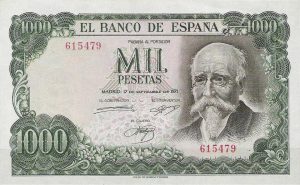
Finally, the 1000 peseta banknote dedicated to José Echegaray, engineer, playwright and mathematician. Although he made no contributions, Echegaray was one of the few Spaniards who kept abreast of what was being done in Europe, and he introduced Galois theory and elliptic functions in Spain, among other advances. He was also the first president of the Spanish Mathematical Society. Echegaray was Minister of Finance and granted the Banco de España the monopoly of issuing currency. In 1904 he was awarded the Nobel Prize (and still they say that there is no Nobel Prize in Mathematics).

DIGNOS DE ELOGIAR